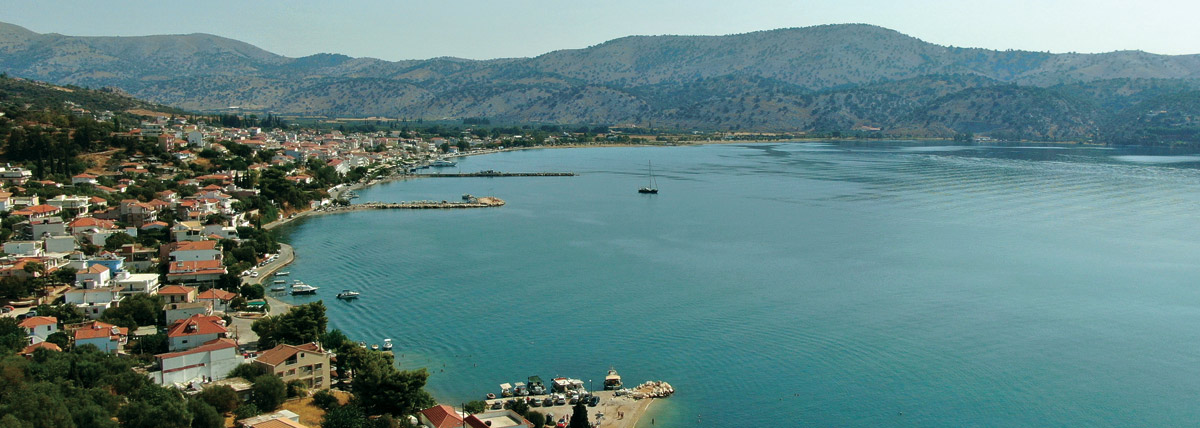
The town of Astakos is built at the foot of Mount Veloutsa (Dikorfo), at the cove of the homonymous bay. It took its name from the mythical Astakos who was the son of Poseidon and Olivia. The word today means “lobster” in Greek, but it has nothing to do with the tasty crustaceans.
The first inhabitants of Astakos and the lands further in (Xiromeri) were Kares and Leleges. When the bay was being formed to build the current port, an Early Helladic settlement was discovered with important architectural and ceramic finds. The ruins of the ancient city are located in the northern part of the area. Remains of walls and a large number of shells were found in this place. Finds were also discovered in other places such as in Graves (where the classical Astakos town later developed) and in Agios Nikolaos, in the western opening of the bay.
During classical antiquity, Astakos was at the center of the Athenian-Peloponnesian dispute. The Lobsters initially sided with the Spartans, but in the third year of the war the Athenians sailed into the Gulf of Astakos with 800 strong (400 Athenians and 400 Messinians) and brought Astakos back to the side of the Athenians. The city continued its prosperity until the Roman period, when the populations of Acarnania (including Astakos) were forced to leave and settle in Nikopolis of Aktio.
During the Byzantine period, the population gathered in the area around the castle of Dragamestos, which guarded the inland passages and supervised the traffic in the bay. The place name “Dragamesto” probably has Slavic origins and means “valley place”. In the courtyard of the castle there are the ruins of many buildings and important monuments (three Byzantine temples). The most impressive of all is the old Byzantine church of Agia Aikaterini.
During the Turkish occupation, the final battle of the famous Sea Battle of Nafpaktos took place in the area. The naval battle was very important because it seriously damaged the prestige and morale of the Ottomans. Until then (1571), the Turks were undefeated and the rumor circulated among the Christians was that they could not be defeated. The naval battle took place in the Gulf of Patras, but the final battle took place at the mouth of the Acheloos, between the Gulf of Astakos and the sea area of the Echinades Islands.
The modern Astakos is full of life and has significant touristic and commercial development, partly due to the completion of the new major port in Platygyali.
Agios Panteleimonas is the nearest eastern bay in the bay of Astakos. This windless opening was used as a safe anchorage for small ships during the 19th century AD. Warehouses and tanneries were built there as a result of commercial activities related to acorn. On the west side of the bay and on a conical hill there is a small fortress with six semicircular towers, built probably at the end of the classical period in order to deal with pirate raids.
Platygiali is a bay at the eastern opening of the Gulf of Astakos. Today it hosts the modern commercial port of Astakos. During the construction works of the port in the 80’s, an underwater settlement of the 3rd millennium BC was found, but for the sake of the project was reburied.
At the foot of the hill, below the castle town of Astakos, lies the “Cyclops Cave”, a huge cave on a steep point. It is one of the caves that is considered to have been inhabited by the famous Cyclops Polyphemus, whom Odysseus and his companions blinded.
It is worth visiting the huge oak forest. It extends from the coastal area of Astakos and Platygiali bays to the river Acheloos to the east and Lake Ozero to the northeast. The oak wood fed the shipyards of Europe for centuries, while the oaks were used in tanning and dyeing. However, the excessive exploitation of the forest in the past years, changed its form and extent and today needs immediate protection.
Another attraction of the area is the monastery of Profitis Ilias where the chief of the revolution of 21 Karaiskakis had his headquarters.



